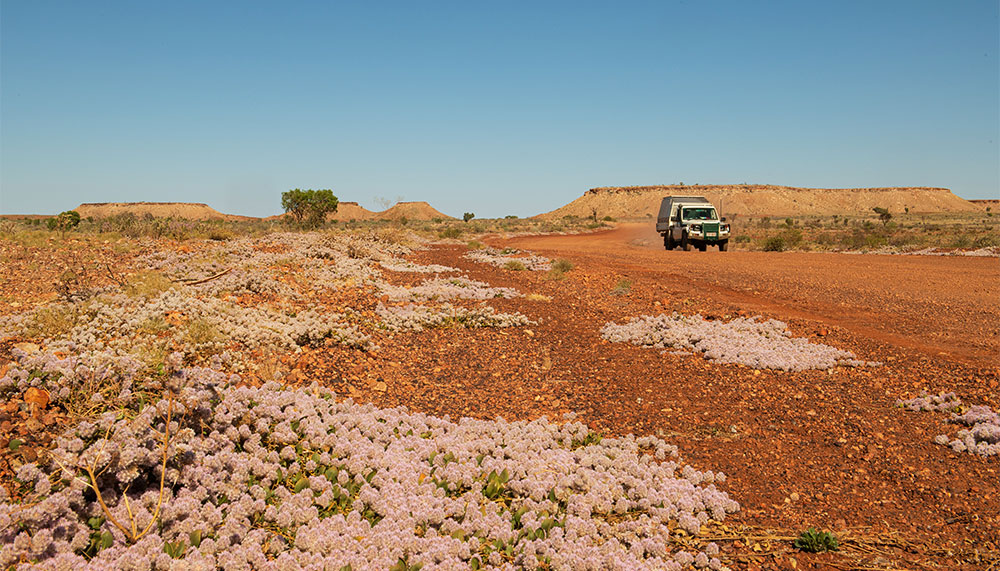The remote Gary Junction Road goes from Marble Bar to Alice Springs, traversing two states and two deserts.
Story + Photos Mandy McKeesick
Not surprisingly, it’s bloody hot at Marble Bar in north-west WA. Often referred to as Australia’s hottest town, Marble Bar once had 160 consecutive days where the maximum didn’t drop below 100°F (37.7°C). It’s also the starting point for the Gary Junction Road, a 1,700km run across the Great Sandy and Gibson deserts to Alice Springs. Bookended by bitumen, it is a road initially blazed out of the dunes by surveyor Len Beadell and his Gunbarrel Road Construction Party in the 1960s, and its remote kilometres can vary from pavement-like conditions around salt lakes to bone-rattling, teeth-chipping corrugations. It can be traversed in a couple of days, but for the unprepared this could easily be one very long trip.
Before setting out, permits must be acquired to traverse Aboriginal land between the community of Kunawarritji in WA and Glen Helen in the West MacDonnell Ranges. Permits for the WA section can be obtained from Ngaanyatjarra Land Council and for the NT section from the Central Land Council. In these days of COVID uncertainty, it also pays to phone ahead to communities to ensure they are open to the public. As with any desert travel, it is advisable to carry extra fuel, water and food, and to have some form of emergency communication.
At times Indigenous communities allow camping, but this must be confirmed prior to travel. No camping at all is allowed between Papunya and Kintore on the state border. The best camping spots are Meentheena Veterans Retreat ($10 per person per night); Carawine Gorge; Well 33 on the Canning Stock Route near Kunawarritji; Jupiter Well; and Ormiston Gorge in the West MacDonnells ($10 per person per night).
This story excerpt is from Issue #143
Outback Magazine: June/July 2022










